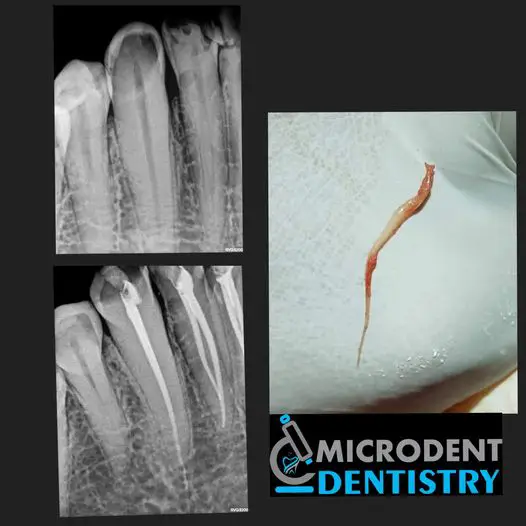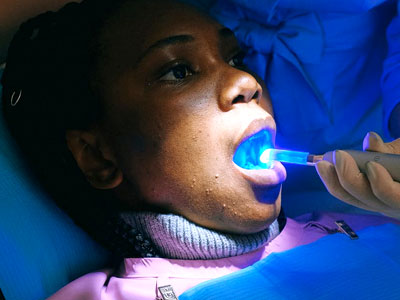Dental x-rays are an integral part of dental practice. It’s impossible to practice dentistry without X-rays. From diagnosis to final results, each step in dental treatment requires antypes dental X-ray.
Let’s briefly consider types of X-rays, their uses, advantages, and precautions to take while using them.
Types of X-rays in Dentistry
- Intraoral periapical radiograph (IOPA).
- Orthopantomograph (OPG).
- Lateral cephalogram.
- Cone-beam computed tomography (CBCT).
Intraoral Periapical Radiograph (IOPA)
These X-rays cover the complete tooth / few teeth including some regions below teeth. They are helpful in Day-to-day Practice and are usually taken during most dental treatments. There are two main types of IOPA
- Film-based IOPA
- Radiovisiography ( RVG ) / Digital IOPA
Film-based IOPA
Film-based are conventional X-ray films that are when exposed to X-rays, record the images and once developed with a developer, produce the black and white images of hard tissues on film. It requires a developer and fixer to produce an image on film.
They are small in size and difficult to read images. It requires more exposure to X-rays. Difficult to keep these films stored for a longer time and they lose the details of images after a few days/months.
Radiovisiography ( RVG ) / Digital IOPA
It’s an advanced form of the periapical radiograph. It has a sensor, which is attached to the computer/laptop. Once exposed to X-ray radiation, it produces an image instantly on the computer.
Radiovisiography ( RVG ) / Digital IOPA
Advantages of Radiovisiography (RVG)
- It requires 10 times less X-ray exposure than normal IOPA. Minimum exposure reduces the risk of X-ray radiation-related health hazards in the long run.
- It produces a digital image of teeth and the surrounding bone and can be enhanced, zoomed in and out as per requirement. The image can be edited and transferred to any device. It helps to see minor details of teeth and surrounding structures which is beneficial in proper diagnosis and perfect treatment.
- Digital images can be stored in laptop software for a long time and this digital record remains in software.
- It helps explain the problem to the patient, who can easily understand it. These images can be printed on paper and can be sent to the patient if required.
Orthopantomograph (OPG)
OPG is usually advised for patients with multiple teeth problems, Patients with temporomandibular joint disorders, and pre-implant analysis. OPG is full mouth x-rays that involve upper and lower jaws including all teeth, maxillary sinus, and bilateral temporomandibular joints.
Lateral cephalogram
It is the lateral x-ray of teeth, jaws, and complete face including the head. It is particularly used in orthodontic treatment planning.
Lateral cephalogram
Cone-beam computed tomography (CBCT)
It is the most advanced digital x-ray. It gives three-dimensional images of jaws, teeth, and surrounding structures. It has many uses in dentistry.
it helps in endodontic treatment, it provides all the details of teeth, like the number of roots, number of canals, size of the periapical lesion, fracture of the root, and so on.
CBCT is a must for Dental implant treatment. It provides all details of the implant site, the thickness of bone, the width of bone, and anatomical structures present at and around the implant site. Also, helps to decide the size of the implant.
Pre implant & post-implant placement analysis with cbct is an important step in implant practice.
Conclusion: These are the various types of dental X-rays that are commonly used in Dentistry. If your dentist prescribes a dental X-ray and looking for a convenient dental X-ray nearest to you, then contact us. At Microdent Dentistry, we provide all types of dental X-rays in Pune.
Exploring Dental X-Ray Services in Kothrud, Pune:
Discovering the world of dental X-rays in Kothrud, Pune opens a window into modern dental diagnostics. From panoramic views to detailed intraoral scans, each type offers unique insights into oral health. Whether it’s assessing wisdom teeth or detecting cavities, our expert services ensure precise imaging for comprehensive dental care.
For an appointment, you can always contact Microdent Dentistry.
Blogs — https://microdentdentistry.com/blog/
For more details
Please visit the website: https://microdentdentistry.com/



